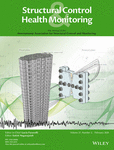Data-driven models for temperature distribution effects on natural frequencies and thermal prestress modeling
Summary
In vibration-based damage detection, it is fundamentally important to distinguish between changes in the dynamics of a structure and those related to environmental effects. Modal properties of structures are widely used as damage-sensitive features and indicate changes in physical properties due to structural damage or degradation. However, civil structures such as bridges are influenced by various operational and environmental conditions (such as traffic, wind, humidity, and, most importantly, temperature), and these variables also alter the modal properties of structures. Changes in modal properties caused by environmental effects can mask the effect of structural damage, resulting in unreliable structural damage assessments. It is thus fundamentally important to understand the relationship between environmental effects and modal properties. In this paper, a full-scale finite element (FE) model is used in a simulation-based study to investigate the effects of temperature distribution on natural frequencies. Two approaches for modeling the temperature effects on natural frequencies (thermal prestress imposed at an element level and temperature-dependent Young's modulus) are implemented in the FE model, and results are compared. Then, temperature profiles of the model are hypothetically simulated. These simulation results are used to develop a linear model and the three most popular machine learning models to reproduce the effects of temperature distribution on natural frequencies. Finally, a comprehensive comparison is made between the performances of these data-driven models.




